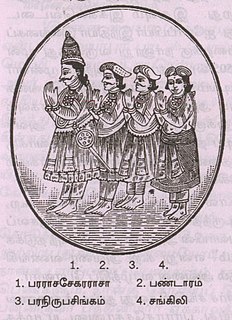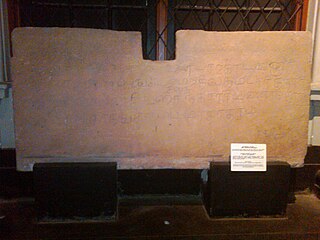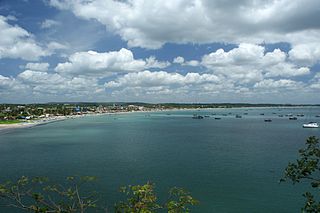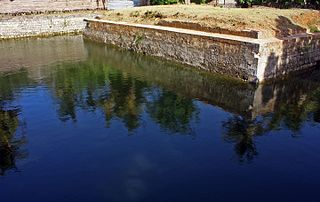 W
WThe Jaffna Kingdom, also known as Kingdom of Aryachakravarti, of modern northern Sri Lanka was a historic monarchy that came into existence around the town of Jaffna on the Jaffna peninsula. It was traditionally thought to be established after the invasion of Magha, who is credited with the founding of the Jaffna kingdom and is said to have been from Kalinga, in India. Established as a powerful force in the north, north east and west of the island, it eventually became a tribute-paying feudatory of the Pandyan Empire in modern South India in 1258, gaining independence in 1323, when the last Pandyan ruler of Madurai was defeated and expelled in 1323 by Malik Kafur, the army general of the Muslim Delhi Sultanate. For a brief period, in the early to mid-14th century, it was an ascendant power in the island of Sri Lanka when all regional kingdoms accepted subordination. However, the kingdom was eventually overpowered by the rival Kotte Kingdom, around 1450 when it was invaded by Prince Sapumal under the Kotte Kingdom's directive.
 W
WThe Arya Chakravarti dynasty were kings of the Jaffna Kingdom in Sri Lanka. The earliest Sri Lankan sources, between 1277 and 1283, mention a military leader of this name as a minister in the services of the Pandyan Empire; he raided the western Sri Lankan coast and took the politically significant relic of the Buddha’s tooth from the Sinhalese capital city of Yapahuwa. Political and military leaders of the same family name left a number of inscriptions in the modern-day Tamil Nadu state, with dates ranging from 1272 to 1305, during the late Pandyan Empire. According to contemporary native literature, such as Cekaracecekaramalai, the family also claimed lineage from the pandyas of the prominent Hindu pilgrimage temple of Rameswaram in the modern Ramanathapuram District of India. They ruled the Jaffna kingdom from the 13th until the 17th century, when the last of the dynasty, Cankili II, was ousted by the Portuguese.
 W
WCankilian Thoppu facade or Poothathamby arch, simply known as Cankilian Thoppu, is an ancient facade, and one of the remnants of the Jaffna kingdom. The arch is located on the Jaffna-Point Pedro Road, near Nallur, Jaffna. The Cankilian Thoppu is an archaeological protected monument in the Jaffna District and was listed as such by the Sri Lankan government in 2007.
 W
WThe Flag of the Jaffna Kingdom of the Aryacakravarti line of kings of Jaffna kingdom in northern Sri Lanka consisted of the couchant bull, the silver crescent moon with a golden sun. The single sacred conch shell, which spiral open to the right, and in the centre above the sacred bull, is a white parasol with golden tassels and white pearls. The color of the Royal Flag is saffron. The flag symbols are similar to number of flags found in India especially belonging to the Eastern Ganga dynasty. The Setu coins minted by the Aryacakravarti kings also have a similar symbol.
 W
WThe Kotagama inscription found in Kegalle District in Sri Lanka is a record of victory left by the Aryacakravarti kings of the Jaffna Kingdom in western Sri Lanka. The inscription reads;"The women-folks of lords of Anurai who did not submit to Ariyan of Cinkainakar of foaming and resounding waters shed tears from eyes that glinted like spears and performed the rites of pouring water with gingerly seed from the bejeweled lotus like hands."
 W
WMantri Manai or Manthiri Manai is a historic palace situated in Nallur, Jaffna, Sri Lanka. It is one of the archaeological protected monuments in Jaffna District and was listed by the Sri Lankan government in 2007.
 W
WAndré Furtado de Mendonça was a captain and governor of Portuguese India, and a military commander during Portuguese expansion into Ceylon, India, Indonesia and Malacca.
 W
WNallur is an affluent suburb in Jaffna, Sri Lanka. It is located 3 km south from Jaffna city centre. Nallur is most famous for Nallur Kandaswamy temple, one of Sri Lanka's most sacred place of pilgrimage for Sri Lankan Hindus. Nallur is also famous for being the historical capital of the old Jaffna Kingdom and birthplace of renowned philosopher and theologian, Arumuka Navalar.
 W
WRuins of Jaffna kingdom refer to the remains of the Remaining building structures of Jaffna kingdom, the royal abode and structure of the ruling dynasty of the Kingdom of Jaffna, Nallur, Jaffna in Northern Sri Lanka.
 W
WSetu coins or Setu bull coins are found in large quantities in the northern part of Sri Lanka and in Southern India. Codrington in his book Ceylon Coins and Currency published in 1924 and Mitchiner in his book Oriental Coins published in 1978 have clearly pointed out that the traditional design of Sri Lanka standing King Type Copper Massa (coins) of the Jaffna Kingdoms belongs to the Aryacakravarti dynasty from 1284 AD to 1410 AD. Setu coins were previously attributed to the Setupati Princes of Ramanathapuram in South India. There are two series one in the issued from the 13th to the 15th centuries and the other after the brief loss of sovereignty to the rival Kotte kingdom from 1450 to 1467 and reconstitution of the Kingdom. Even during the rule of Sapumal Kumaraya coins were issued in Jaffna that was distinct. Three types of this series are illustrated below. The obverse of these coins have a human figure flanked by lamps and the reverse has the Nandi (bull) symbol, the legend Sethu in Tamil with a crescent moon above.
 W
WTrincomalee also known as Gokanna/Gokarna, is the administrative headquarters of the Trincomalee District and major resort port city of Eastern Province, Sri Lanka. Located on the east coast of the island overlooking the Trincomalee Harbour, 237 kilometres (147 mi) north-east of Colombo, 182 kilometres (113 mi) south-east of Jaffna and 111 kilometres (69 mi) miles north of Batticaloa, Trincomalee has been one of the main centres of Sri Lankan Tamil language speaking culture on the island for over two millennia. With a population of 99,135, the city is built on a peninsula of the same name, which divides its inner and outer harbours. People from Trincomalee are known as Trincomalians and the local authority is Trincomalee Urban Council. Trincomalee city is home to the famous Koneswaram temple from where it developed and earned its historic Tamil name Thirukonamalai. The town is home to other historical monuments such as the Bhadrakali Amman Temple, Trincomalee, the Trincomalee Hindu Cultural Hall and, opened in 1897, the Trincomalee Hindu College. Trincomalee is also the site of the Trincomalee railway station and an ancient ferry service to Jaffna and the south side of the harbour at Muttur.
 W
WThe Vanni chieftaincies or Vanni principalities was a region between Anuradhapura and Jaffna, but also extending to along the eastern coast to Panama and Yala, during the Transitional and Kandyan periods of Sri Lanka. This land was a collection of chieftaincies of principalities that were a collective buffer zone between the Jaffna Kingdom, in the north of Sri Lanka, and the Sinhalese kingdoms in the south. The emergance of these chieftaincies were a direct result of the breakdown of central authority and the collapse of the Kingdom of Polonnaruwa in the 13th century, as well as the establishment of the Jaffna Kingdom in the Jaffna Peninsula. Control of this area was taken over by dispossessed Sinhalese nobles and chiefs of the South Indian military of Māgha of Kalinga (1215–1236), whose 1215 invasion of Polonnaruwa led to the kingdom's downfall. Sinhalese chieftaincies would lay on the northern border of the Sinhalese kingdom while the Tamil chieftaincies would border the Jaffna Kingdom and the remoter areas of the eastern coast, outside of the control of either kingdom.
 W
WYamuna Eri is an ancient pond situated in Nallur, Jaffna, Sri Lanka. In 1948, it was listed as one of the protected archaeological monuments in the Jaffna District by the Sri Lankan government.